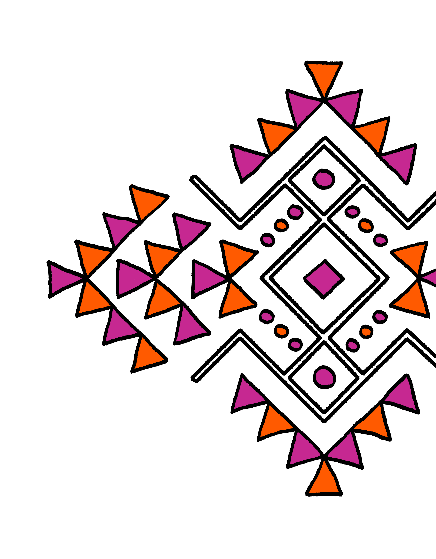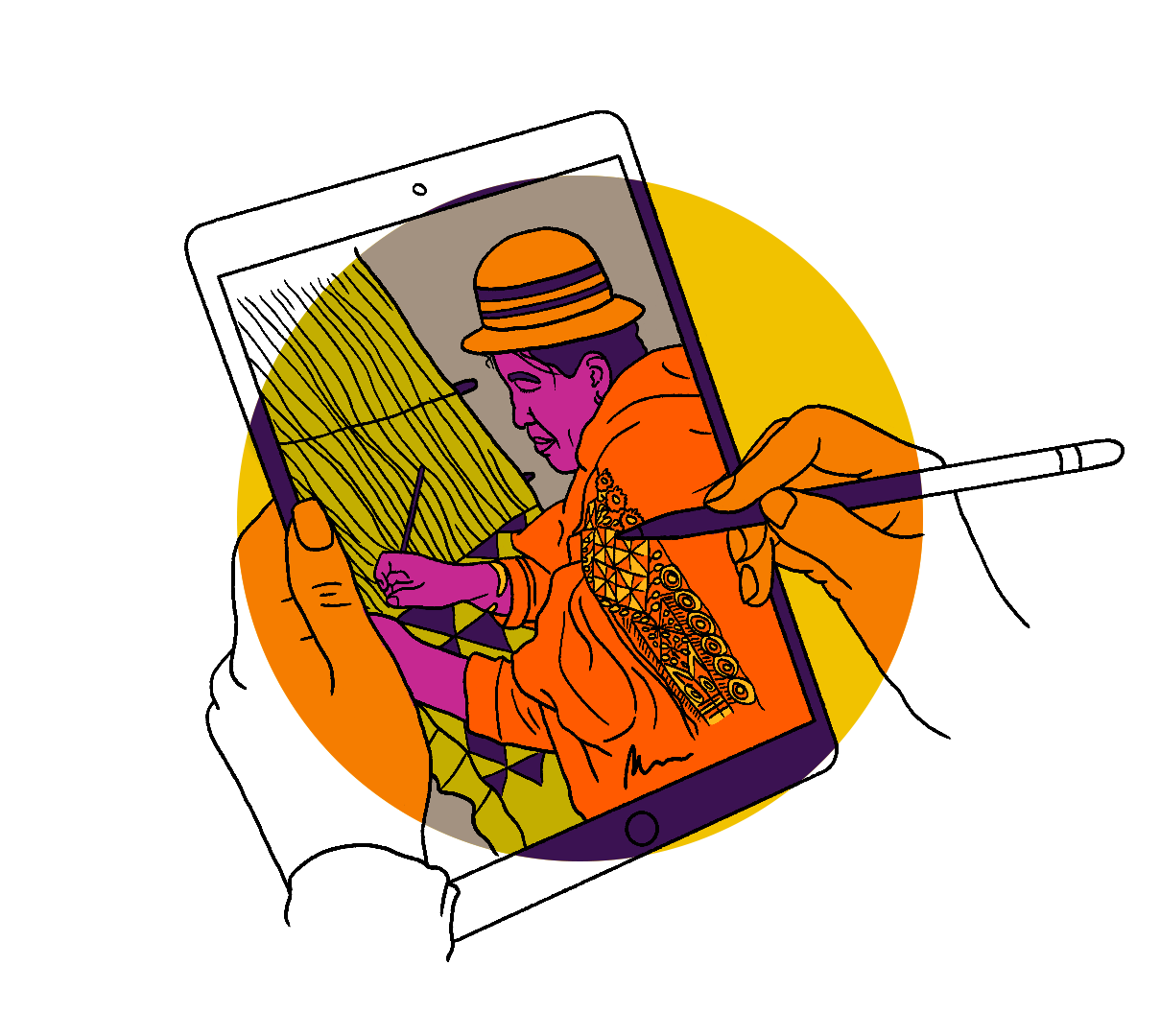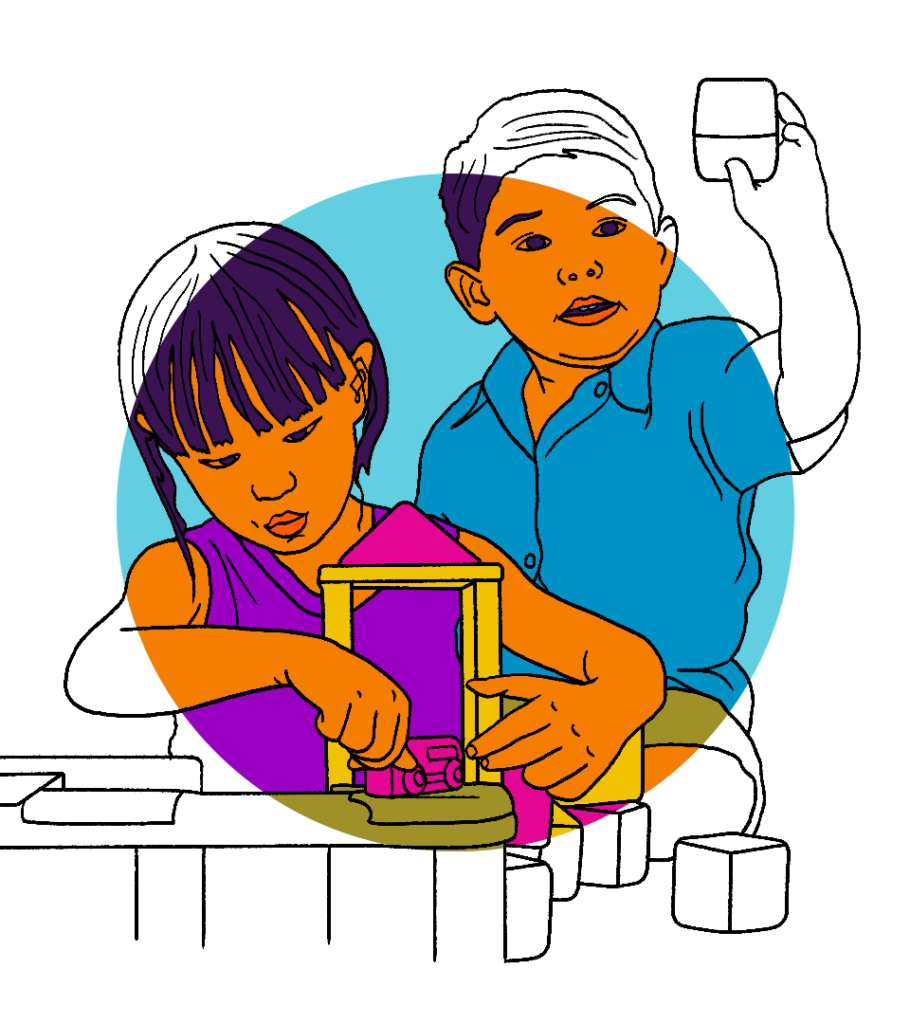A project creating NFTs from the work of artisans in the Gran Chaco region of South America seeks to bring native art to global audiences.
Jessica and her mother walk side by side, collecting Carandillo palm for their daily work. Silently, in the mountains of the Gran Chaco, they make use of the sun to dry the fibre, shred it and begin to weave each thread to make crafts: baskets and ornamental pieces; art from native hands, with history, culture and generations of experience in the mountains locked inside it. As they walk back home, Jessica dares to ask aloud, ‘Mom, don’t they see us?’
At an altitude of 3,600 metres in the Andes, in the city of La Paz, Mirna, a calligrapher and digital illustrator with a unique talent for graphic art draws images of women wearing the typical skirts of their land, as a way of telling their stories, their cultural expressions and their desires. She dreams of one day taking her images of the ‘cholitas’ – women who represent the fortitude of her beloved Bolivia – to mainstream international galleries. But, suddenly, a doubt arises in her mind: ‘Is there anyone who will want to display my art?’
Meanwhile, thousands of kilometres to the north, Susana rests after a day of work, sitting in front of the fireplace in the home that protects her from the winter. Her busy day of meetings with her colleagues from the Art Committee ended at the Seattle Convention Center, a 139,000m2 facility in the Seattle metropolitan area that has tasked her with looking for artwork to decorate its luxurious spaces. She thinks, with some optimism, how much she would like to show art from her Bolivian homeland, reflecting her Latin identity in that impressive gallery. She pauses in doubt: ‘How could I bring artwork from my hometown here, given all the costs and logistical difficulties?’
At the end of the day, in the silence of their different realities – in the Chaco, in La Paz and in Seattle – the same question echoes in the thoughts of Jessica, Mirna and Susana: ‘Don’t they see us?’
In 2021, organisations committed to the development of the Gran Chaco, including the IDB LAB, Fundación Avina, WTT World-Transforming Technologies,
Fundación Gran Chaco, Grupo SUNU and NATIVA, launched an open call, #ChacoInnova. The aim was to respond to the urgent situation of more than 2,000 artisans in the region, prevented from selling their works by the isolation of their communities and by rural- city migration – a situation aggravated by the global pandemic. CAMINNOS, a social innovation laboratory located in Bolivia, responded to the invitation, presenting its latest project, IMPACT NFT, which seeks to use disruptive technology to bring value and promote the native art of rural communities.
IMPACT NFT is the only digital art experience in the world that allows creators, digital artists, collectors and curators to co-create native art together
IMPACT NFT was selected to promote the development of the American Chaco through innovative commercial solutions. CAMINNOS set up a project in which craftswomen like Jessica can meet face to face with digital artists like Mirna and art curators like Susana, so that together, in a process of co-creation, they can take the essence of the work of Chaco artisans and transform it into digital art, registered and verified for authenticity through Blockchain technology. This project will allow digital art pieces to reach crypto art galleries, in which, transformed into non-fungible tokens (NFTs), they can be marketed on a large scale in a global market without borders that transacted US$17 billion in 2021 alone. The NFT art pieces created were launched as Gran Chaco IMPACT NFT, the first collection of digital native art of Gran Chaco, allowing the region’s culture to spread internationally and form part of the important economic context of blockchain and cryptocurrencies.
Today, the IMPACT NFT project has a constellation of collaborators: six digital artists from Argentina, Colombia, Spain and Bolivia; a dozen art curators with notable track records in culture, art and finance; a network of NGOs to coordinate and connect the project; and the protagonists: over 5,000 native artists who create art and fight for the preservation of their culture.
In April 2022, the project achieved a notable milestone. A recognised collector from Silicon Valley, owner of some of the most popular collectibles in the NFT market, such as the Bored Ape Yacht Club, NBA Top Shots, VeeFriends and other relevant projects, joined IMPACT NFT with the intention of acquiring the the first NFT of the collection, and launching an alliance within CAMINNOS and the Blockchain organisation (DAO, or decentralised autonomous organisation) he founded, NFTY DREAMS, to replicate the project in other regions across the globe. Our immersive experience enables collectors to travel to the Chaco to meet the artisans, visit their community, produce art in their villages and generate social impact, all by acquiring an NFT.

The project seeks to position the native art of Gran Chaco in international art markets, through real-life experiences and virtual events that showcase the region’s culture and traditions. At the same time, there is a focus on training female native artists of the region in digital illustration techniques, decentralised finance, NFT art and blockchain technology, and on supplying the communities with digital equipment to transform the native art pieces into digital art and to tokenise it, with the objective of addressing the limitations and barriers – reinforced by the pandemic – that make it difficult for native artists to market their creations.
IMPACT NFT is the only digital art experience in the world that allows creators, digital artists, collectors and curators to co-create native art together and share intercultural experiences that generate true impact through the protection and promotion of the culture of rural communities. As a social entrepreneurship organisation, we create camin(n)os: paths that unite culture and innovation, so women know that they are not invisible but are seen as an example of strength and resilience, that their work is fundamental to the growth of communities, and that their art preserves the beauty of our culture.








